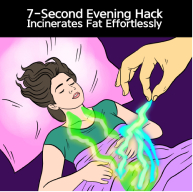As women over 35, our bodies, minds, and priorities shift in powerful ways. With increasing demands from work, family, and health, it’s easy to feel overwhelmed. But here’s the truth: building healthy habits doesn’t require perfection—it only requires consistency and compassion toward yourself.
In this guide, we’ll explore how to:
- Understand how habits are formed and rewired.
- Improve your eating patterns for hormone balance and longevity.
- Reap the benefits of exercise even with a busy lifestyle.
- Get better sleep by practicing effective sleep hygiene.
- Manage stress with mindfulness and emotional awareness.
This is not just a “health guide”—it’s a lifestyle shift rooted in science-backed strategies, crafted especially for women like you, navigating midlife with grace, strength, and intention.
Understanding Habit Formation: How to Rewire Your Brain
What Is a Habit Loop?
At the core of any habit lies the habit loop, which includes:
- Cue: A trigger that starts the behavior (e.g., time of day, mood).
- Routine: The action you take (e.g., late-night snacking).
- Reward: The benefit you gain (dopamine release, stress relief).
Your brain, especially the basal ganglia, is wired to favor energy-saving routines. Once a pattern is repeated, it becomes automatic—good or bad.
Why Breaking Bad Habits Is So Hard
Your brain resists change. Why? Because it’s more efficient to rely on existing neural pathways than to create new ones. This is why breaking a habit feels like swimming upstream—it literally requires your prefrontal cortex (decision-making center) to override the basal ganglia.
How to Build Healthy Habits That Stick
- Start small: Anchor a new habit to an existing routine (e.g., meditate for 2 minutes after brushing your teeth).
- Replace, don’t erase: Substitute harmful habits with beneficial alternatives.
- Reward consciously: Celebrate wins to trigger dopamine intentionally.
- Stay consistent: Repetition rewires the brain. Habits form through frequency, not intensity.
Healthy Eating: Nourishing Your Body From the Inside Out
Foundations of a Healthy Diet
According to the Dietary Guidelines for Americans, a healthy eating pattern includes:
- Vegetables: All types, colors, and textures.
- Whole Fruits: Not juice—whole fruits offer fiber.
- Whole Grains: Brown rice, whole wheat pasta, oats.
- Protein Variety: Beans, fish, poultry, nuts, eggs.
- Healthy Fats: Olive oil, avocado, flaxseed oil.
- Low-fat Dairy: Or fortified alternatives like soy milk.
Avoid or minimize:
- Added sugars
- Saturated fats
- Excess sodium
- Processed foods
The Healthy Eating Plate (Harvard)
- ½ Plate: Colorful vegetables and fruits
- ¼ Plate: Lean proteins like fish, beans, and nuts
- ¼ Plate: Whole grains
- Use healthy oils (olive, canola) and drink water instead of sugary drinks.
Nutrients Women Over 35 Often Lack
- Calcium: Crucial for bones. Found in low-fat dairy, greens, fortified plant milks.
- Vitamin D: From fatty fish, sunlight, and fortified foods.
- Fiber: Improves digestion and hormone detox. Found in whole grains, legumes.
- Potassium: Balances blood pressure. Found in bananas, sweet potatoes, leafy greens.
Practical Healthy Eating Tips
- Plan ahead: Reduce last-minute poor choices.
- Cook at home more: Control ingredients and portions.
- Mindful meals: Eat without screens; enjoy textures and flavors.
- Simple swaps: Nuts for chips, water for soda, fruit for dessert.
Benefits of Exercise for Women Over 35
Physical activity isn’t just about weight—it’s about vitality. After 35, hormonal changes make movement essential for metabolic balance and emotional well-being.
Comprehensive Benefits
- Cardiovascular Health: Lowers blood pressure, improves heart function.
- Metabolic Support: Enhances insulin sensitivity, helps prevent type 2 diabetes.
- Bone Density & Muscle Strength: Reduces risk of osteoporosis and frailty.
- Mood and Mental Health: Decreases depression, anxiety, and improves sleep.
Best Types of Exercise
- Aerobic (Cardio): Walking, cycling, dancing—supports heart and lungs.
- Strength Training: 2–3x/week with weights or resistance bands—preserves muscle.
- Flexibility & Balance: Yoga, Pilates, tai chi—prevents falls, eases joint pain.
- HIIT (High-Intensity Interval Training): Boosts metabolism in short time frames.
Exercise & Hormones
Physical activity naturally helps balance hormones like cortisol, insulin, and even estrogen. This is especially powerful for women going through perimenopause or menopause.
Sleep Hygiene: Your Secret Weapon for Wellness
You cannot out-eat or out-exercise poor sleep. Period.
What Is Sleep Hygiene?
Sleep hygiene includes the behaviors and environmental factors that help you sleep better. According to sleep researchers, good sleep:
- Regulates hormones (cortisol, melatonin, insulin)
- Supports memory and focus
- Improves immune function
- Prevents mood disorders
Key Sleep Hygiene Habits
- Consistent schedule: Sleep and wake at the same time daily.
- Digital sunset: Avoid screens 1 hour before bed.
- Cool, dark room: Ideal sleep environment is 60–67°F.
- Avoid caffeine and alcohol: Especially after 2 PM.
- Evening wind-down routine: Stretching, journaling, or herbal tea.
Mindfulness & Stress Reduction
Chronic stress disrupts hormones, digestion, sleep, and even your ability to form new habits.
What Is Mindfulness?
Mindfulness means paying attention on purpose to the present moment without judgment. It rewires your brain to become less reactive and more intentional.
Proven Benefits
- Lowers cortisol (the stress hormone)
- Reduces anxiety and depression
- Improves emotional regulation
- Enhances cognitive flexibility
Daily Practices
- 5-minute breathing exercises
- Body scan meditation
- Gratitude journaling
- Mindful eating (notice taste, texture, fullness)
Putting It All Together: Your Blueprint for Healthy Living
Weekly Habit Template (Example)
| Day | Focus Area | Habit Example |
|---|---|---|
| Monday | Nutrition | Prep 3 veggie-packed lunches |
| Tuesday | Exercise | 30 min walk + 10 min resistance bands |
| Wednesday | Stress Reduction | Body scan meditation before bed |
| Thursday | Healthy Habit Swap | Replace soda with herbal tea |
| Friday | Sleep Hygiene | No screens after 8:30 PM |
| Saturday | Joyful Movement | Dance or bike ride |
| Sunday | Reflection & Planning | Journal + meal plan for the week |
Frequently Asked Questions (FAQ)
Research suggests it takes 21 to 66 days, depending on the habit and individual consistency.
Yes. Especially strength and aerobic training which reduce cortisol and stabilize insulin levels.
– Drink a glass of water before coffee
– Go for a 10-minute walk post-meal
– Replace one snack with a fruit or nut mix
Focus on your “why”—your family, your energy, your future. Also, track small wins, not just results.
Your Health Journey Begins with One Choice Today
Healthy habits are not about strict rules—they’re about freedom. Freedom to feel good in your body, sleep deeply, move joyfully, and show up fully for what matters most.
You don’t need to change everything overnight. Start small. Stay consistent. Be kind to yourself.
Your body will thank you. Your future self will too.







